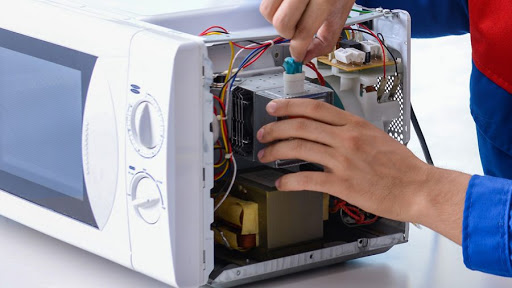Fixing Microwave Steam Sensor Woes: Easy Solutions for Common Problems

Our home appliances, while helpful, can sometimes act up. One common issue is a faulty microwave steam sensor. In this guide, we’ll explore how to fix this problem and provide essential tips for handling any appliance repair. By the end, you’ll be equipped with simple steps to restore your appliances without any hassle.
Why Your Microwave Steam Sensor Acts Up: Easy Explanations
Sometimes, your microwave’s steam sensor can go haywire. Here’s the straightforward scoop:
- Food Residue: Those little bits of food left behind can confuse the sensor, making it act strangely.
- Moisture Buildup: If there’s too much moisture inside, the sensor can get confused and not work properly.
- Wear and Tear: Just like anything else, over time, the sensor can wear out, causing it to give incorrect readings.
Easy DIY Fixes for Your Microwave Steam Sensor: Step-by-Step
When your microwave’s steam sensor is acting up, you can try these simple solutions:
- Cleaning the Sensor:
-
- Use a damp cloth to gently wipe away any residue from the sensor area.
- Avoid using rough materials to prevent any damage.
- Testing the Sensor:
- Place a microwave-safe cup of water inside and heat it on low.
- Watch how the microwave behaves. If it works fine, residue or moisture might have been causing the problem.
- Checking Ventilation:
- Make sure the microwave’s ventilation system is working properly. This helps prevent moisture buildup.
- Consulting the Manual:
- If you’re unsure, check the manual for specific cleaning and troubleshooting tips. The manufacturer’s instructions can be really helpful.
What to Do When You Need Appliance Repair: Simple Steps
Facing a misbehaving appliance can be overwhelming, but don’t fret. Here’s how to handle it in easy steps:
- Identify the Issue: Take a moment to observe your appliance. Is it making strange sounds, refusing to heat up, or displaying confusing error codes? Understanding the problem is the key to finding a solution.
- DIY Troubleshooting: Grab your appliance manual. It’s like a helpful guidebook. Many common issues have simple fixes mentioned there. You might discover an easy solution that saves you a repair call.
- Professional Help: If the problem persists or if you’re unsure about fixing it yourself, it’s time to call in the professionals. These experts are trained to deal with complex issues. They diagnose the problem accurately and provide a reliable fix, ensuring your appliance works smoothly again. Don’t hesitate to reach out; they’ve got you covered!
Empowering Homeowners in Appliance Repairs
In summary, having a grasp of common appliance issues and recognizing when to tackle them yourself and when to ask for help can save you valuable time and reduce stress. By following these straightforward steps, you can address small problems, such as a malfunctioning microwave sensor, and maintain the smooth operation of your appliances. A little knowledge can make a big difference in keeping your home running efficiently and hassle-free.



![[Solved] Viewpoint blunder [pii_email_e6af9796c02919183edc]](https://i.postimg.cc/QxSk2czx/How-to-Change-Primary-Account-on-Outlook1.jpg)


![[pii_email_07cac007de772af00d51] Awards: 6 Reasons Why They Don’t Work & What You Can Do About It](https://i.ibb.co/dfgvTg1/pii-email-be5f33dbc1906d2b5336.png)